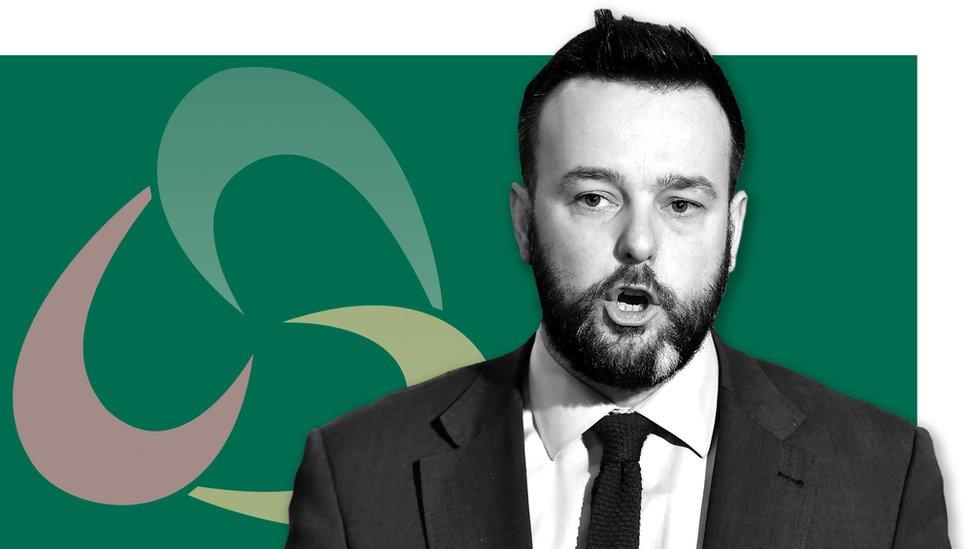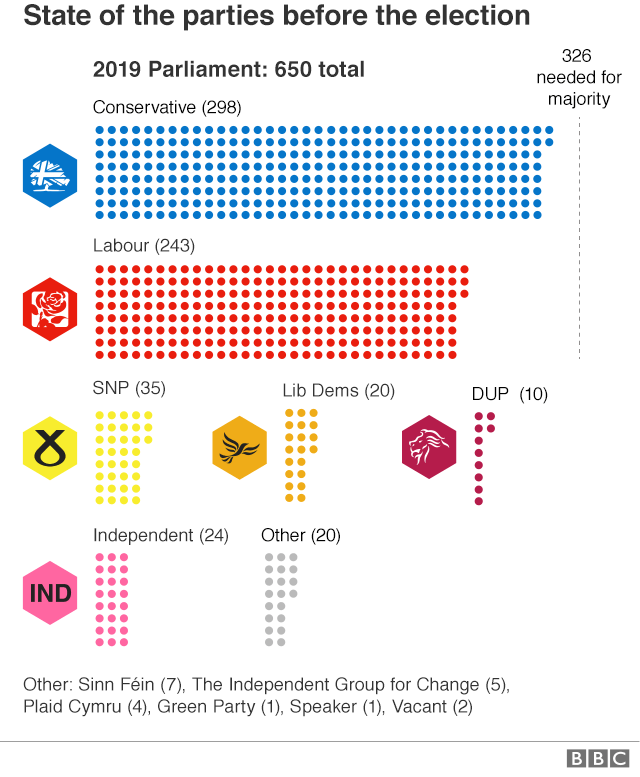General election 2019: A simple guide to the SDLP
- Published

Once the dominant nationalist party in Northern Ireland, the Social Democratic and Labour Party (SDLP) lost all its seats at the last general election in 2017.
It lost the seats of Foyle and South Down to Sinn Féin, while the Democratic Unionist Party took its seat in South Belfast.
This time around the party has said it will stand aside in some areas to "maximise the pro-remain vote".
It has 11 Northern Ireland Assembly members.
Who is the leader?
Colum Eastwood has been the leader of the party since November 2015, taking over from Alasdair McDonnell. The 36-year-old is the assembly member for Foyle.
He unsuccessfully stood in the race to win a seat in the European Parliament in May.
Five key election pledges
The party's manifesto contains a number of pledges, including:
Stop Brexit
Make radical proposals for the reform and restoration of an executive at Stormont
Extend welfare mitigations in Northern Ireland for another four years
Bring forward emergency legislation promoting a carbon-neutral economy by 2030
Implement legislation to give official status to the Irish language


Where does it stand on Brexit?
The party did not back Brexit and campaigned for remain in the 2016 EU referendum.
In the European Parliament election in May, it said if Northern Ireland could not remain in the EU or have "special status to effectively remain" then Article 50 - the formal process to leave - should be revoked.
It also supports the People's Vote campaign for a further referendum on Britain's EU membership.
What else does it stand for?
As an Irish nationalist party, the SDLP wants Northern Ireland to leave the UK and unite with the Republic of Ireland.
It has always supported this happening through peaceful means and is strongly opposed to violence.
The SDLP sits on the centre-left of the political spectrum.
Unlike Sinn Féin it is not abstentionist and any MPs elected for the party take their seats at Westminster.
SDLP policy in a tweet
Allow X content?
This article contains content provided by X. We ask for your permission before anything is loaded, as they may be using cookies and other technologies. You may want to read X’s cookie policy, external and privacy policy, external before accepting. To view this content choose ‘accept and continue’.

What is the SDLP's history?
In August 1970 former members of a number of nationalist parties and left-wing parties came together to form the SDLP.
They included West Belfast MP Gerry Fitt, who became the party's first leader and John Hume, who succeeded Fitt as leader and held the position until 2001.
He is regarded as one of the main architects of the Good Friday Agreement peace deal of 1998.
What is the link between the SDLP and Fianna Fáil?
In February, the SDLP voted overwhelmingly in favour of a partnership with Fianna Fáil, the largest opposition party in the Republic of Ireland.
There had been reports the parties would merge, or form an alliance, but in the end they agreed to a less comprehensive link-up.
Both parties will keep their identities but develop common approaches on social and economic issues, Brexit and Irish unity.